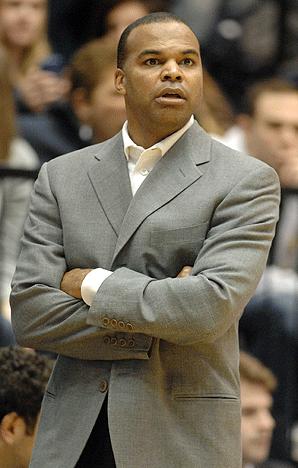Harvard looking to break through college basketball's glass ceiling
Now, after an incredible half-decade that included the school's first two Ivy League titles, a first NCAA tournament trip since 1946, a national ranking and a connection to the worldwide media frenzy of Linsanity, Harvard basketball faces another flex point. Armed with on-court credibility and the Crimson's world-leading brand, Amaker and his staff can create something even bigger: the establishment of a top-25 program at a school where anything less than No. 1 usually is insufficient. In the process, they're also testing the constraints of the modern Ivy League in the NCAA's deepest, most competitive pond. If the Crimson are successful, they could become the first modern Ivy national power.
"I think at every stop along the journey, you're going to be confronted with a different challenge," Amaker said last week from Cambridge when asked about how the team's recent success has changed the future landscape. "For us, we're still at that stage of really grinding at it."
It's no real secret that the Ivy League prides itself on being different, on giving significant heft to the legalese that is "student-athlete." In the same breath, though, the league has always been a bit embarrassed by success in the so-called revenue sports. The league pulled the plug on football ambition in the late 1970s but has never really figured out its place in the modern basketball landscape.
Ever since Penn's trip to the 1979 Final Four helped spawn an "Academic Index", the Ivies have been happy being an anachronism, with a funky conference schedule, no tournament and no real hope of landing legitimate high Division I talent thanks to the academic, financial and competitive constraints every team in the league faces.
Almost despite itself, its self-regulation and, in several cases, faculty pushback against basketball commitment, though, the league has spawned a handful of very good teams. Two years after Princeton nearly stunned Georgetown in the famous 1-16 game in 1989, the Tigers were wearing white as an 8-seed. Then came two separate top-25 Penn teams, a top-10 Princeton team, and some years later, Cornell's breakthrough 30-win campaign that ended in the Sweet 16. These last two seasons were two of the strongest and deepest in the RPI era and generated very worthy champions.
No one's title runs have really been sustainable beyond one class, though. The stars on those championship teams either landed there by chance (transfer or LOI problems) or happenstance (fluke injury). Simply put, Ivy teams don't land enough stud players to extend cycles of dominance. That's the glass ceiling Harvard is now hoping to burst through.
"I think the most important thing for them is targeting the right guys [and getting on them early]," said Evan Daniels, national basketball recruiting analyst for Scout.com.
Through a combination of his staff's hard work, the rejiggering of the financial aid program at the school as a whole and some tweaks in recruiting priority across the athletic department, Amaker has landed a large number of very solid players in Cambridge. While Amaker says they're still going after the same kind of kid for their program as when he arrived, the push in the Class of 2013 clearly is for a higher caliber of talent. Early returns on the experiment, though, have been a bit disappointing.
Despite landing well regarded big man Zena Edosomwan, who was willing to reclassify to 2013 and take a prep year, Harvard may miss on its other primary targets for a breakout class. Recently, elite wing prospect Stephen Domingo opted for Georgetown and point guard Nigel Williams-Goss chose Washington, both programs in better leagues, that are always on TV, that don't play in a 2,000-seat home arena or at Dartmouth on a cold January night. These are the kind of realities that no one in the Ivy can get past. Even if a kid qualifies financially (never a given) and academically (more difficult now that the league has raised the Academic Index floor again), there are plenty of quality schools that offer better play -- and potentially a better path to the NBA.
"At the end of the day, Harvard is an elite academic school, and they have a good coach and a good coaching staff," Daniels said, "but kids also want to play in a high-major conference, so it's an uphill battle from that standpoint."
It's maybe the most fascinating aspect of Harvard's basketball renaissance, the nation's top university pushing not just against its own limits but against a broader landscape that it had a large part in stacking against itself. Can Harvard overcome the Ivy? Does it actually want to? The decisions of a few high school kids, admissions and financial aid officers over the coming months will provide the answer to that and whether this current Ivy king will soon have to abdicate the throne, just like all of its predecessors.





